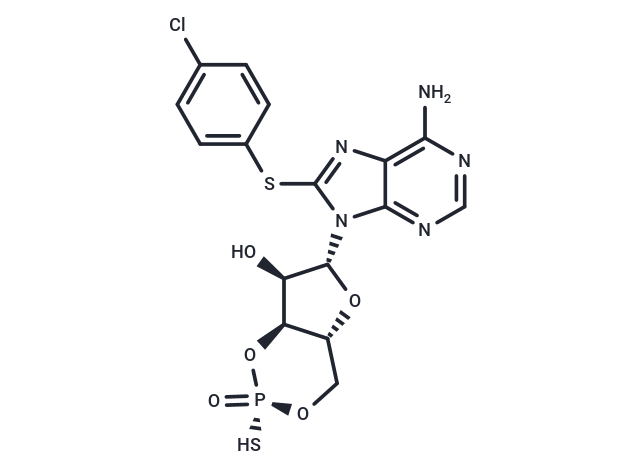Shopping Cart
Remove All Your shopping cart is currently empty
Your shopping cart is currently empty
Sp-8-CPT-cAMPS is a powerful and specific cAMP analog that activates cAMP-dependent protein kinase A (PKA I and PKA II) selectively and effectively. It exhibits a 153-fold preference for site A of RI over site A of RII, and a 59-fold preference for site B of RII over site B of RI.

| Pack Size | Price | USA Warehouse | Global Warehouse | Quantity |
|---|---|---|---|---|
| 5 mg | $970 | Inquiry | Inquiry |
| Description | Sp-8-CPT-cAMPS is a powerful and specific cAMP analog that activates cAMP-dependent protein kinase A (PKA I and PKA II) selectively and effectively. It exhibits a 153-fold preference for site A of RI over site A of RII, and a 59-fold preference for site B of RII over site B of RI. |
| In vitro | Sp-8-CPT-cAMPS at a concentration of 100 μM and duration of 24 hours notably amplifies IL-1β-induced nitrite release in vascular smooth muscle cells, augmenting this release threefold even without IL-1β presence. Additionally, it boosts the expression of iNOS protein in rat aortic smooth muscle cells under the same conditions [2]. At a lower concentration and shorter exposure (10 μM; 30 min), Sp-8-CPT-cAMPS demonstrates anti-spasmogenic properties by reducing acetylcholine (ACh)-induced tension in guinea-pig trachealis [3]. |
| Molecular Weight | 487.87 |
| Formula | C16H15ClN5O5PS2 |
| Cas No. | 129693-13-6 |
| Smiles | Nc1ncnc2n([C@@H]3O[C@@H]4CO[P@@](S)(=O)O[C@H]4[C@H]3O)c(Sc3ccc(Cl)cc3)nc12 |
| Relative Density. | no data available |
| Storage | Powder: -20°C for 3 years | In solvent: -80°C for 1 year | Shipping with blue ice/Shipping at ambient temperature. |
| Size | Quantity | Unit Price | Amount | Operation |
|---|

Copyright © 2015-2026 TargetMol Chemicals Inc. All Rights Reserved.